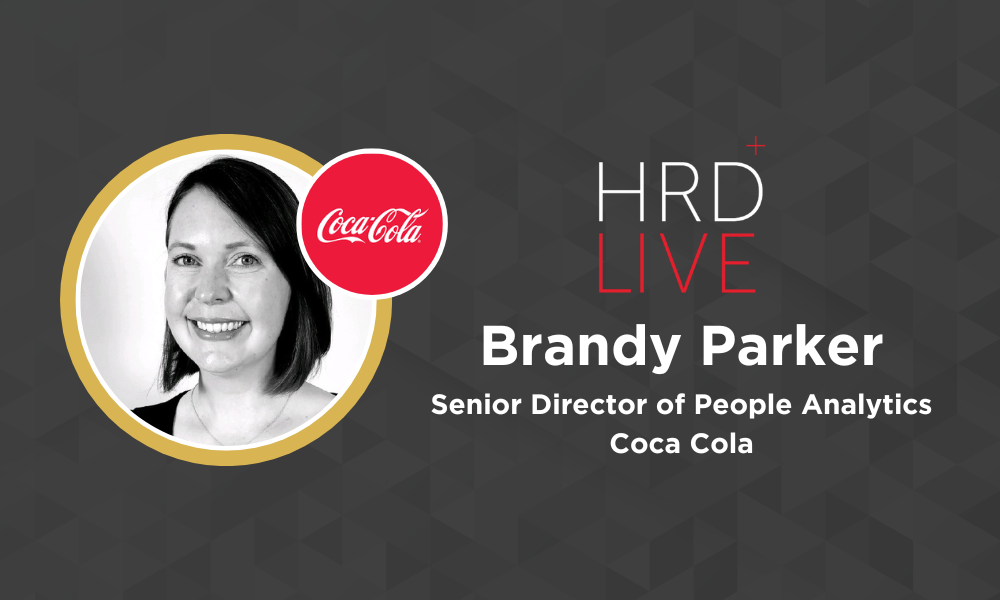Coca Cola: Using people analytics to supercharge workforce planning
- 5 Min Read
“People analytics teams can inform the strategy of building versus buying talent. For example, if we need certain skills data, we may want to look at external job market trends to inform hiring decisions, or whether or not we want to bring in contractors.”
- Author: Benjamin Broomfield
- Date published: Mar 15, 2023
- Categories

Podcast: Play in new window | Download
Subscribe: RSS
Amid a talent shortage and frequent layoffs, which organizations are winning? The answer, it seems, is careful workforce planning. Apple, at the time of publication, is the most notable technology company not to announce layoffs. Unlike many other technology giants including Twitter and Facebook, it did not accelerate hiring during and following the pandemic. Prudent workforce planning has allowed it a degree of calm amidst the chaos. But where does people analytics come into the conversation?
Brandy Parker, Senior Director of People Analytics, Coca-Cola, is the latest guest on the HRD Live Podcast, and the first in a mini-series on people analytics. Parker is a strong advocate for the use of people analytics as a strategic partner for workforce planning. She shares best practices for spotting talent availability and collaborating with core business stakeholders such as finance and talent development and considers how people analytics can offer long-term stability to organizations alongside short-term adaptability.
How should people analytics support workforce planning?
People analytics can support workforce planning in numerous ways. Parker calls particular attention to talent availability, and the insights people analytics can bring to this business challenge.
“If you have a great repository of information in your organization about worker skills, even if it’s self-identified, and you don’t have a lot of proficiency information, people analytics gives you a starting place to say, where do we think we have gaps? Where would we want to grow our talent? Where do we want to invest our dollars to help with training individuals?”
Moreover, workforce planning often brings together teams and leaders from different functions, from finance to talent development. Crucially, people analytics should be a means to grounds different stakeholders in the same definitions. Parker offers the example of headcount.
“If you talk to someone in finance, they may think of headcount as ‘FTE’ (full-time equivalent). If you’re talking to someone in compensation and benefits or talent development, they’re thinking of physical people. It’s surprising that can trip up conversations so much. You end up focusing too much on numbers not matching, or people having different understandings. If we had ground ourselves in the definitions of the data pieces themselves, as well as the metrics we’re calculating, that could clear up a lot of confusion.”
A further best practice Parker references is the objective lens people analytics brings to each conversation. Each party rightly brings its subject matter expertise to the table during workforce planning. People analytics holds the role of objectivity through data, insights, and inferences that make internal viewpoints and external trends relevant to the conversation.
Workforce planning relies on data insights
Whether workforce planning sits under talent development groups, finance, or another business division, people analytics should serve as its strategic partner. Workforce planning relies heavily on its ability to leverage multiple data sources, whether that be employee perceptions around organizational change or skills data. People analytics is a vital source of data for these topics.
“People analytics teams can inform the strategy of building versus buying talent. For example, if we need certain skills data, we may want to look at external job market trends to inform hiring decisions, or whether or not we want to bring in contractors.”
Moreover, people analytics teams frequently contain leaders with experience in change management or design job analysis. Such individuals bring in a huge amount of subject matter expertise that can augment the data or statistics they bring to the table. In short, these individuals are a vital resource for workforce planning teams.
How to leverage people analytics to ensure long-term stability
Beyond the short-term adaptability it can offer to help solve immediate challenges such as talent gaps, people analytics can also ensure long-term stability. Parker emphasizes the need to integrate data insights from people analytics into day-to-day business practices, to help long-term growth strategy.
“Every time we talk about data, it gets compartmentalized as a separate thing that has to be cared for, managed, or addressed. Really, the more we can fold it into day-to-day business practices, the better off we’ll be.”
Parker argues that spinning up people analytics into a huge project that will disrupt organizational structures can create change fatigue and frustration. Instead, organizations should leverage people analytics teams to make data a more natural and consistent part of any conversation. This requires partnering with other functions such as finance. Understand their workflows and build the habit of data use to drive long-term business stability and growth.
Timestamps
00:17 – Introduction
01:09 – Why is people analytics such a vital component of workforce planning?
02:55 – Are there strategies or techniques to help organizations spot talent availability?
04:39 – What best practices are there for people analytics functions when collaborating with different such as stakeholders like finance or talent development?
08:00 – What resources or investment does a people analytics function need to best support workforce planning?
11:40 – How does a data-led approach to workforce planning offer business leaders’ short-term adaptability?
13:05 – And how does a data-led approach help organizations plan for long-term growth?








